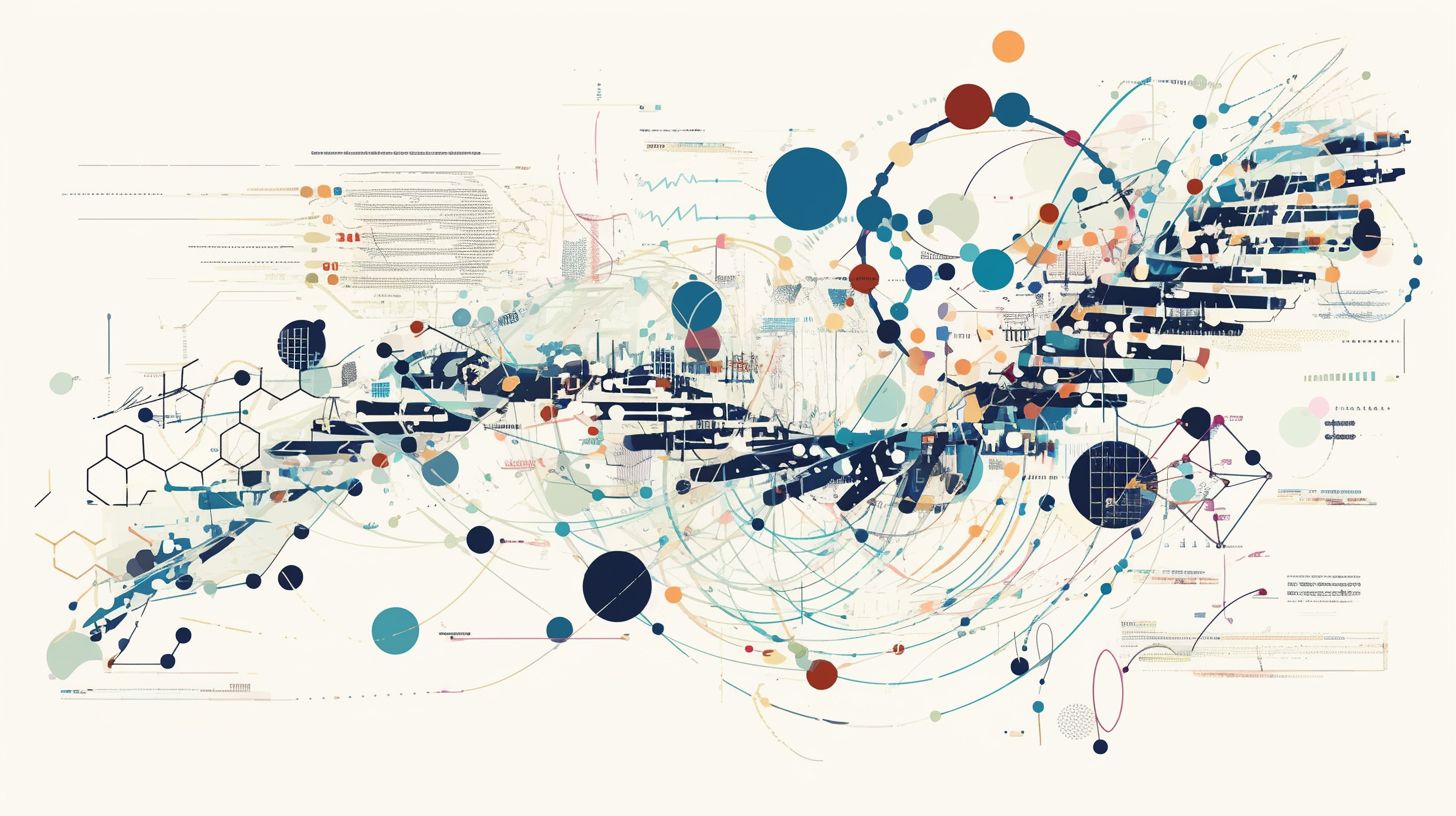Reading time [minutes]: 7
Distributed Diagnostics
Molecular diagnostics: centralised vs. distributed models compared
Centralised and distributed molecular diagnostics: differences, advantages and integration of models in a post-pandemic perspective
Abstract
Molecular diagnostics is increasingly strategic for public and private health. This article analyses two operational models - Core Lab and distributed laboratory - comparing features, costs, time and reliability. Thanks to the experience gained during the pandemic and the adoption of platforms such as the Hyris System™, Ulisse Biomed proposes a hybrid model: intelligent PoC devices connected via cloud and supervised by central laboratories. Direct contributions from President Stefano Lo Priore and clinical and economic impact data complete the analysis.
- Snapshot
- Introduction
- 1. The centralised model: high volume efficiency and comprehensiveness
- 2. The distributed model: speed and access close to the patient
- 3. Predictive diagnosis, accessibility and economic impact
- 4. bGATE and hybrid models: the future according to Ulysses Biomed
- 5. Summary Comparison of Models
- INTERVIEW- Stefano Lo Priore
Snapshot
- Molecular diagnostics: a set of laboratory techniques that identify specific genetic sequences to diagnose diseases.
- Core Lab: a centralised laboratory equipped with high automation and large-scale analysis capabilities.
- Distributed diagnostics: decentralised diagnostic architecture that allows tests to be performed directly close to the patient (clinic, peripheral laboratory, remote sites), while maintaining an active link with the central laboratory for quality control, data collection and supervision.
- TAT (Turnaround Time): average time between sample collection and availability of results.
- bGATE: gateway developed by Ulisse Biomed to integrate and transmit PoC test results to the cloud, connecting them to the central laboratory. ▪ bCUBE: portable device for real-time PCR, part of the Hyris System™.
- Quality Control (QC): procedures to ensure that diagnostic results are accurate and reproducible.
Introduction
Molecular diagnostics is now one of the pillars of modern medicine, as demonstrated during the COVID-19 pandemic, when the ability to rapidly identify viral pathogens proved crucial in containing the spread of the virus, enabling the early and accurate identification of infectious, genetic and oncological diseases. Within this landscape, two distinct organisational models for testing have emerged: centralised (Core Lab) and distributed. Both have advantages and limitations, and comparing them is crucial for stakeholders such as biotech investors, laboratories, clinics and policy makers. In this article, we will explore the characteristics of the two models in depth, comparing response times, costs, operational capabilities, accessibility and infrastructure requirements. We will see in which contexts each model offers the most value, what the emerging challenges and opportunities are, and how technological innovation is driving integration between centralised and distributed models. We will conclude with a look to the future and Ulisse Biomed's vision of how to build a truly efficient, widespread and connected diagnostic ecosystem.
1. The centralised model: high volume efficiency and comprehensiveness
The centralised model is based on highly automated laboratories with high production capacity, capable of processing thousands of samples per day. Thanks to robotic pipelines and complex instrumentation, these centres achieve economies of scale that significantly reduce the cost per test. In addition, they can offer a wide range of highly reliable diagnostic services thanks to strict quality standards. However, the average turnaround time (TAT) is longer, especially if the sample comes from peripheral facilities. Furthermore, the need for complex infrastructure and highly specialised personnel limits its use to large hospital hubs.
2. The distributed model: speed and access close to the patient
The distributed model brings diagnostics closer to the patient, in clinics or in the field or at sites far away from centralised diagnostic laboratories. Portable diagnostic systems enable rapid molecular testing, allowing for timely clinical intervention and reducing hospital stays. A concrete example is the use of portable PCR platforms during the pandemic in major European airports, where rapid reporting has drastically reduced waiting times and contained outbreaks among international travellers. During the pandemic, distributed systems played a key role as interconnected territorial diagnostic nodes, enabling rapid SARS-CoV-2 testing without compromising the integrity of the information flow to the central laboratory. Today, they are also a strategic asset in rural areas, health emergencies, home care and remote sites. However, they pose organisational challenges: limited test menus, the need to train non-specialised operators, widespread quality control requiring telemonitoring systems, shared digital protocols and automated result verification tools. Field studies highlight how the absence of centralised supervision can increase the risk of pre-analytical or analytical errors, particularly in environments with high clinical staff turnover. As Lorenzo Colombo, CTO of Ulisse Biomed, points out, decentralised diagnostics cannot do without artificial intelligence: 'Our devices integrate automatic monitoring systems, predictive AI for early error identification, and cloud platforms that aggregate and analyse data in real time. This allows not only centralised remote supervision, but also continuous quality improvement thanks to adaptive models. Decentralised diagnostics is not synonymous with lower quality, provided it is supported by adequate control systems and continuous training."

3. Predictive diagnosis, accessibility and economic impact
Another advantage of modern distributed diagnostics is direct integration with clinical information systems (EMR/LIMS). Results generated peripherally are transmitted in real time to hospital management software, automatically updating medical records and enabling physicians to make timely decisions. This continuous digital flow avoids information silos, facilitates traceability and speeds up clinical intervention in emergency situations. Interoperability is now an expected standard for any high-level distributed device. In addition to speed, distributed diagnostics enable greater accessibility and can reduce indirect costs, as demonstrated in a CDC study that found an average reduction of 1.2 days in hospital stays through the use of rapid tests in emergency rooms, with an estimated savings of approximately $450–600 per patient (e.g., lost work days). Studies indicate that rapid molecular testing reduces diagnosis times and improves flow in emergency departments [4]. However, the costs per test are higher and must be balanced against systemic benefits: the rationale should not be interpreted solely as the rapid delivery of a single test, but as part of a distributed infrastructure that enables clinical timeliness, reduction of avoidable hospitalisations and decentralised management of diagnostic flows. While the price per test is higher, point-of-care testing can significantly reduce avoidable hospitalisations, prolonged hospital stays, and transport and logistics costs. In several studies, the adoption of PoC has shown a reduction in repeat hospitalisations thanks to timely diagnosis, while improving the quality of care.
4. bGATE and hybrid models: the future according to Ulisse Biomed
Ulisse Biomed's vision is based on a hybrid model of centralised laboratories that act as quality hubs, and cloud-connected devices across the territory. Solutions such as bGATE enable data integration from the sample to the central system, maintaining control, traceability and accuracy. According to the company's leadership, the harmonious coexistence of Core Labs and distributed laboratories represents the future: a model that guarantees territorial scalability, operational sustainability and a faster return on investment for laboratories and healthcare facilities that need to combine efficiency and widespread service coverage. Speed, resilience and operational proximity on the one hand; accuracy, standardisation and scientific support on the other.
As Stefano Lo Priore, President of Ulisse Biomed, points out, ‘a distributed diagnostic ecosystem, if well orchestrated, is not only possible today but necessary: it guarantees clinical timeliness and strategic governance at the same time.’
5. Summary Comparison of Models
After exploring the characteristics and operational implications of centralised and distributed models, it is useful to summarise the main indicators that distinguish them. The following table provides a direct comparison to support strategic decisions by laboratories, investors and stakeholders in the healthcare sector.
Towards hybrid models: the best of both worlds
More and more healthcare networks are integrating centralised laboratories with a distributed network of devices. The laboratories act as quality hubs, while the distributed devices provide timely information in the field. The Ulisse Biomed model reflects this trend: the distributed devices are connected via the cloud, remotely controlled and seamlessly integrated into the central clinical workflow. This approach ensures operational efficiency, consistent quality and greater system resilience.
| Indicator | Core Lab | Distributed Lab |
|---|---|---|
| Average TAT | 24–48h | 1–2h |
| Throughput capacity | Thousands of tests/day | 1–5 tests per device |
| Test menu availability | Broad (includes specialist tests) | Limited, expanding |
| Quality Control (QC) | Centralized and continuous | Distributed, requires supervision |

INTERVIEW
Stefano Lo Priore, President of Ulisse Biomed
Q: President Lo Priore, let's start with the big picture. In your opinion, what is the strategic role of molecular diagnostics in the post-pandemic context today?
R: La diagnostica molecolare è passata dall’essere una funzione tecnica a diventare una leva strategica per la sanità pubblica e privata. Ha cambiato la percezione di tempo, accuratezza e prossimità. Oggi non si tratta solo di identificare un patogeno, ma di farlo ovunque, con precisione e in tempo utile per decidere.
Q: The comparison between centralised and distributed models is at the heart of this article. In your opinion, what is the main issue to be clarified regarding this dichotomy?
A: Calling it a dichotomy is a conceptual error. It's like asking whether the heart or the lungs are better: they work together. The narrative that sees the distributed laboratory as the antagonist of the Core Lab is old, sterile, and risks hindering innovation. The issue is not “either/or”, but “how to make them talk to each other”. The future belongs to those who know how to make them cooperate intelligently. This is not just technical interoperability, it is a cultural paradigm shift: we need to bring the quality of the laboratory everywhere, without sacrificing central control. We have decided to design right there: at the point of contact between peripheral speed and central authority.
Q: In concrete terms, how does this integration translate into your technological offering?
A: With a distributed but governed platform. Each bCUBE device is connected via the cloud to our central system, allowing us to centralise readings, validate data and identify anomalies. This means we can scale our territorial presence while maintaining central laboratory standards. There is still a lot to do, of course. But the path has been laid out and we are heading in the right direction: bringing excellence where before there was only distance.
Q: From what you say, it seems that the critical issue is the quality of decentralised testing. How do you ensure reliability in non-specialist environments?
A: It's not the only one, but it's perhaps one of the most critical issues because it can undermine confidence in the distributed model as a whole. If a test performed in a peripheral environment gives an inaccurate or unreliable result, the entire system is called into question: not just the device, but the whole approach. It's a reputational and clinical risk we can't afford to take. We've built the system around the concept of expected error. Everything is tracked, monitored and alerted in real time. And when necessary, we intervene remotely.
Q: This balance between proximity and control seems to have interesting operational implications. In your opinion, what are the most significant advantages of this mixed approach?
A: Scalability, resilience and operational continuity. The assets are lightweight but integrated. Return times are reduced and the serviceable area is expanded. But what really sets this approach apart is its impact on clinical workflows: faster decisions, more accurate triage, fewer patients waiting for a diagnosis in the emergency room. Intelligent distribution allows peaks in demand to be absorbed without saturating the central system. And then there is a fundamental “conceptual” advantage: those who adopt our technology are not just buying tools, however technologically advanced, but a new way of thinking about diagnostics. They acquire a new operating architecture, activating new potential that only distributed diagnostics can offer. It is not just a technological approach, it is a conceptual leap: it means moving into a new paradigm where the laboratory is not a physical place, but a distributed, responsive and intelligent network.
Q: A paradigm shift. What does this mean from an evolutionary point of view for those involved in diagnostics or even those interested in investing in this sector?
R: È una trasformazione che riguarda la mentalità, prima ancora della tecnologia. Chi opera nella diagnostica deve iniziare a pensare in termini di continuità del dato, non di localizzazione fisica. La qualità non è più ancorata a quattro pareti o a un badge professionale: è nella progettazione intelligente del sistema, nella connettività, nella tracciabilità. E per chi investe, questo paradigma apre a modelli scalabili, resilienza infrastrutturale e riduzione della latenza clinica. Il laboratorio del futuro non si vede, ma lavora per te. Invisibile, ma presente ovunque. Questa è la trasformazione che stiamo costruendo.
Sources and bibliography
[1] Frontiers Market Analysis Team (2024). "Decentralized Molecular Testing: Economic and Clinical Outlook." Front. Lab Chip Technol. 2024;3:1394752.
https://www.frontiersin.org/articles/10.3389/frlct.2024.1394752
[2] Anderson NW et al. "Centralized vs Decentralized Molecular Infectious Disease Testing." Clin Chem. 2021;67(5):713-719.
https://myadlm.org/
[3] ECDC. (2022). Guidance for Integrated Point-of-Care Testing in the European Union. European Centre for Disease Prevention and Control.
https://www.ecdc.europa.eu
[4] Yao JD. "Point of Care Testing." CDC. 2023.
https://www.cdc.gov/
[5] WHO. (2023). Landscape of molecular point-of-care diagnostics for infectious diseases. World Health Organization.
https://www.who.int











